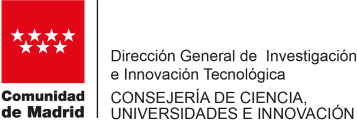
Many cell processes, as those regulating metabolism or proliferation, are highly sensitive to pH changes. For instance, enzymatic activities are generally optimal over a narrow pH margin and heavily decrease above and below it.
In this regard, net charge and structure of macromolecules also depend on proton concentration and maintaining intracellular proton fluxes is crucial for energetic metabolism[1][2].
Therefore, the control of cytosolic pH is pivotal for the cell and the organism itself and, thus, measuring pH changes can be of importance for understanding cell physiology and, on the other hand, for controlling those bio-industrial processes based in cell cultures, as production of antibodies, recombinant proteins, or adeno-viral vectors[3].
Intracellular pH is usually measured in cell cultures by mean of fluorescent, soluble probes, whose intensity, or emission spectrum changes in response to proton concentration [1][4]. These probes are added to culture media to stain the cells and removed after a short period of incubation prior to fluorescent measurement. Qualitative analyses are easily performed by comparing control cells with cells subjected to test items, stimulus, or drugs. pH-sensitive dyes tend to accumulate in the lysosomes, displaying different sensitivities to pH changes depending on the cellular compartment. While in imaging systems this issue can be surpassed by imaging segmentation during the analysis, in flow cytometry is not possible to distinguish among the fluorescence from cytosol or lysosomes, which may lead to non-precise results.

The CytoCHECKSPAchip® pH single-detection kit introduces high benefits for simultaneous measurement of cytosolic and extracellular pH in fluorescence microscopy and Flow Cytometry (FC). SPAchips® are small silicon oxide chips manufacturedphotolithography and reactive-ion etching (RIE) and functionalized with a fluorescent pH-sensing probe through a combination of surface silanization and microcontact printing techniques[5][6].
By diluting SPAchips directly into cell culture, they get internalized by cells after an overnight incubation and pH changes can be tracked in living single cells by measuring fluorescence intensity during extended periods of time.
When added to cell cultures, an average >25% of the cells internalized a chip in the cytosol, where they remain for days without altering cell viability or losing performance. After intracellular pH calibration using nigericin and valinomycin, internalized SPAchips® displayed linear response between pH 5.5 and 7.5, with precise reproducibility and coefficient of variation below 10%. In comparison, probes in solution demonstrated to be toxic in the short or middle term, which impeded to extend the study for longer than just a few hours.



Extracellular SPAchip® populations can be easily identified by flow cytometry in the cell culture suspension by size and complexity (FSC vs SSC). Once extracellular SPAchip® and cell populations have been gated accordingly, it is possible to discriminate fluorescence intensity ranges of extracellular and cytosolic SPAchip® to interpolate pH values. CytoCHECK SPAchip® pH-single detection kit detected a significant decrease in cytosolic pH in cells treated 15 minutes with Antimycin A, with minor changes in cell medium, likely because of glycolytic boost and pyruvate production after electron transport inhibition. Bars represent the mean ± SD of two experiments in triplicate. Statistical comparison vs Control ***p<0.001 (Sidak test). This novel techniques allows to compare intracellular pH values to the cell culture conditions to study the proton fluxes in living single cells as never before.

Cy


CytoCHECKSPAchip® pH-single detection technology is a new reliable and accurate tool for performing cell analysis in imaging systems and flow cytometers capability to detect pH changes along time in the cytosol and cell environment simultaneously makes our technology a valuable tool for:
- Basic cell biology and cell physiology studies.
- Quality Control in bio-industrial processes based in cell cultures, where controlling extracellular pH affects product yield, as recombinant antibody or AAV production.
References: n n[1]J. R. Casey, S. Grinstein, and J. Orlowski, “Sensors and regulators of intracellular pH,” Nat. Rev. Mol. Cell Biol., vol. 11, no. 1, pp. 50–61, 2010, doi: 10.1038/nrm2820. nn[2] A. V. Berezhnov et al., “Intracellular pH modulates autophagy and mitophagy,” J. Biol. Chem., vol. 291, no. 16, pp. 8701–8708, 2016, doi: 10.1074/jbc.M115.691774. nn[3] W. F. Boron, “Regulation of intracellular pH,” Am. J. Physiol. – Adv. Physiol. Educ., vol. 28, no. 4, pp. 160–179, 2004, doi: 10.1152/advan.00045.2004. nn[4] F. B. Loiselle and J. R. Casey, “Measurement of Intracellular pH,” Methods Mol. Biol., vol. 637, pp. 311–331, 2010, doi: 10.1007/978-1-60761-700-6. nn[5] N. Torras et al., “Suspended Planar-Array Chips for Molecular Multiplexing at the Microscale,” Adv. Mater., vol. 28, pp. 1449–1454, 2016, doi: 10.1002/adma.201504164. nn[6] J. P. Agusil, N. Torras, M. Duch, J. Esteve, and L. Pérez-garcía, “Highly Anisotropic Suspended Planar-Array Chips with Multidimensional Sub-Micrometric Biomolecular Patterns,” Adv. Funct. Mater., vol. 1605912, pp. 1–11, 2017, doi: 10.1002/adfm.201605912. n nnnn
nnnnnnn






